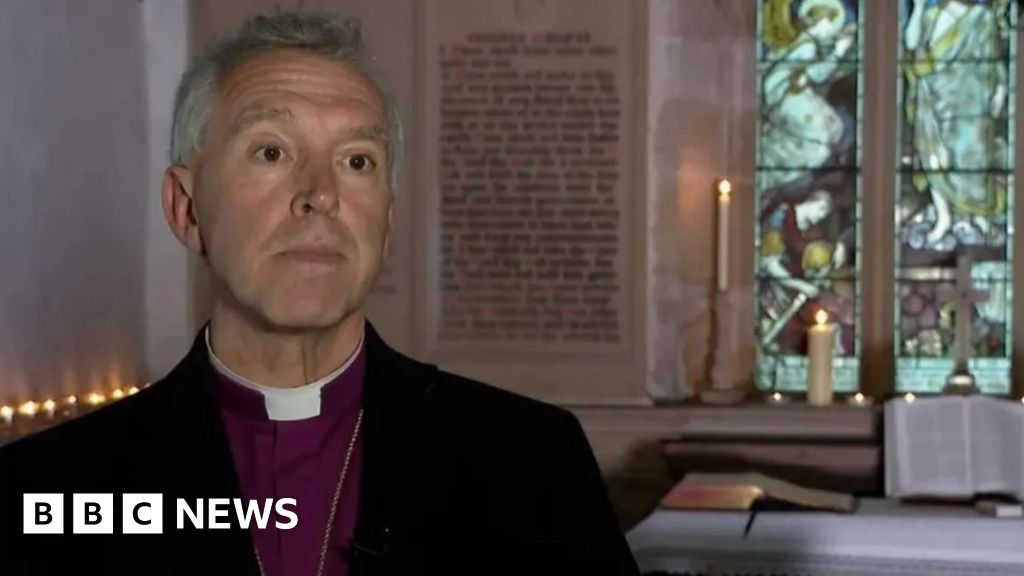The United States military has carried out some of the most complex and difficult missions in the history of warfare, from the storming of the beaches of Normandy to the killing of Osama Bin Laden.
But its latest operation — convincing the American media that its mission to destroy Iran’s nuclear capability was a success — is proving to be a challenging one.
Despite President Donald Trump claiming that the attack had left the facilities "completely and totally obliterated,” questions have lingered about the efficacy of Operation Midnight Hammer.
Those questions were given fuel by a leaked initial assessment from the Defense Intelligence Agency that suggested the strikes did not destroy the core components of the country’s nuclear program and likely only set it back by months.
To discredit what the White House called a “flat-out wrong” assessment by “a low-level loser in the intelligence community,” Trump dispatched the might of the U.S. military’s top brass — Defense Secretary Pete Hegseth and Chairman of the Joint Chiefs of Staff, Air Force General Dan Caine, to set the media straight.
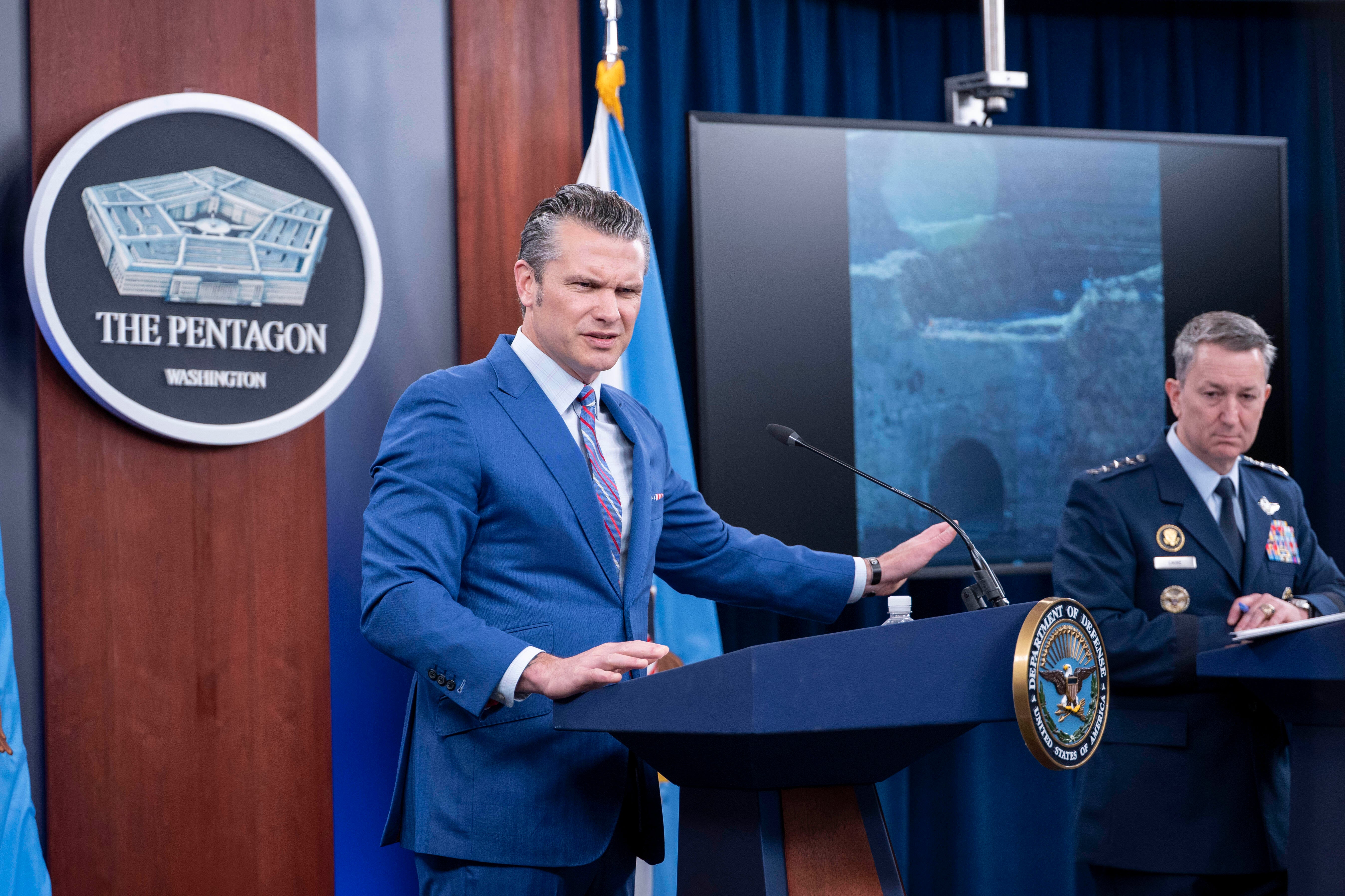
In the early morning press conference, Hegseth played the role of a furious school teacher scolding the Pentagon press corps for not praising the mission or those who carried it out sufficiently, and for focusing too much on the potential downsides — namely the possibility that the strikes did not sufficiently damage Iran’s ability to make a nuclear weapon while simultaneously making it more likely that it builds one in secret.
“It's like in your DNA and in your blood to cheer against Trump because you want him not to be successful so bad you have to cheer against the efficacy of these strikes,” Hegeth said. “You have to hope maybe they weren't effective, maybe the way the Trump administration is representing them isn't true.”
Hegseth seemed to insist that wanting to know if Iran could build a nuke was simply unpatriotic.
"There are so many aspects of what our brave men and women did, that because of the hatred of this press corps, are undermined because you people are trying to leak and spin that it wasn't successful,” he went on.
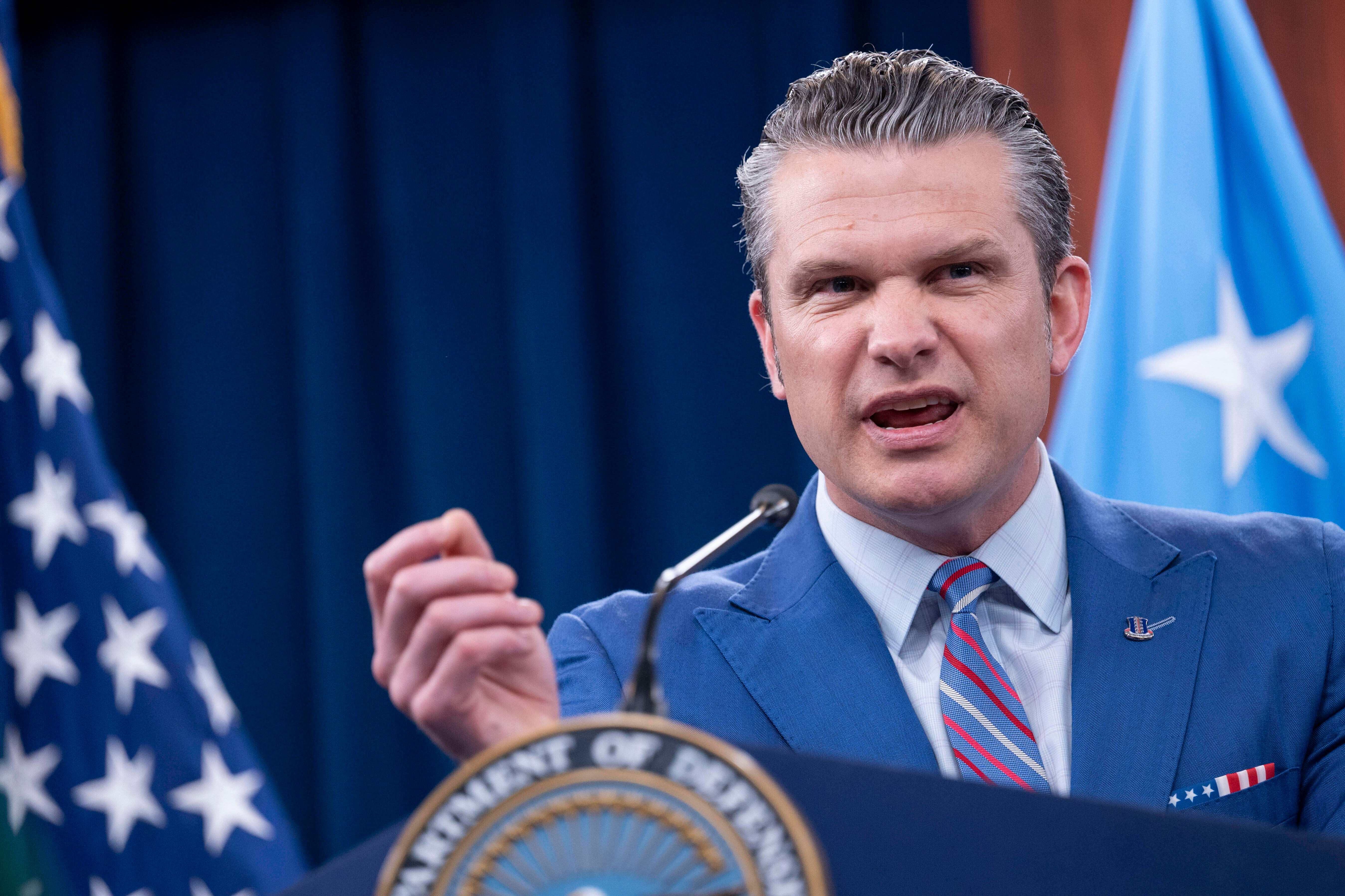
Hegseth appeared angry that the journalists sent to cover the Pentagon spent too much time “hunting for scandals” and not enough time praising the bravery of the bomber pilots who carried out this mission — a great irony considering he works for a president who won the White House in part by lambasting the media and political establishment for lying to the American public about the intelligence that led to the Iraq War.
“How many stories have been written about how hard it is to, I don't know, fly a plane for 36 hours. Has MSNBC done that story? Has Fox?” he asked incredulously, before calling on the press to “wave an American flag” and “be proud of what we accomplished.”
The presentation from Hegseth and Caine at times felt like an extended deleted scene from Top Gun 3, a bewildering barrage of patriotic imagery — flags, bombs, brave pilots and the tears of their families as they returned home from their mission. You could almost hear the faint call of a bald eagle.
Caine’s description of the return of the bomber pilots, in particular, was emotive and touching, but did little to answer questions about Iran’s nuclear capabilities.
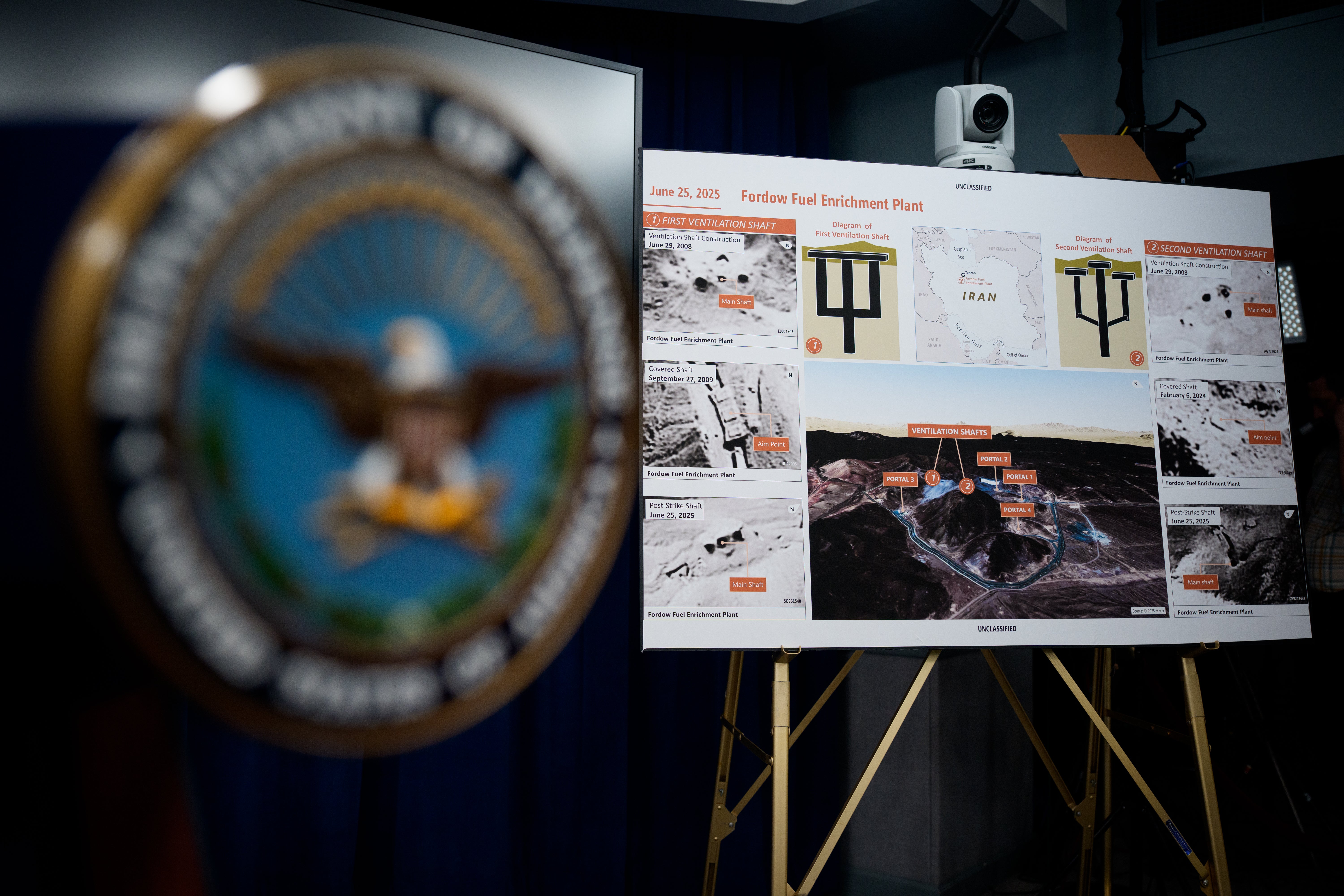
"The jets rejoined into a formation of four airplanes followed by a formation of three, and came up overhead Whiteman [air force base in Missouri] proudly in the traffic pattern, pitching out to land right over the base and landing to the incredible cheers of their families who sacrifice and serve right alongside their family members,” he said.
“There were a lot of flags and a lot of tears. One commander told me this is a moment in the lives of our families that they will never forget," Caine continued.
The general then gave a lengthy tribute to the soldiers who manned the Patriot missile defense system, which shot down a barrage of Iranian missiles fired at U.S. bases in the Middle East in response to the strikes.
“You get orders from your higher headquarters to make sure that your missile batteries are pointed to the north. There are just a few other teammates,” he explained. “It's hot. You're getting nervous, and you expect an attack outside of those Patriot vehicles. Your hot crew, which is one NCO and four additional soldiers, turns a key and relinquishes control of those missiles to that young lieutenant inside the vehicle, and you wait, you know that you're going to have approximately two minutes, 120 seconds, to either succeed or fail.”
Hegseth and Caine’s presentation was clearly ordered by a president who has been outraged at the doubting coverage over his decision to bomb Iran’s nuclear facilities. In the days since the leaked DIA intelligence report, Trump has fumed on social media at the press for daring to question the mission, calling reporters “sick” and demanding their firing for “trying to always make our Country look bad.”
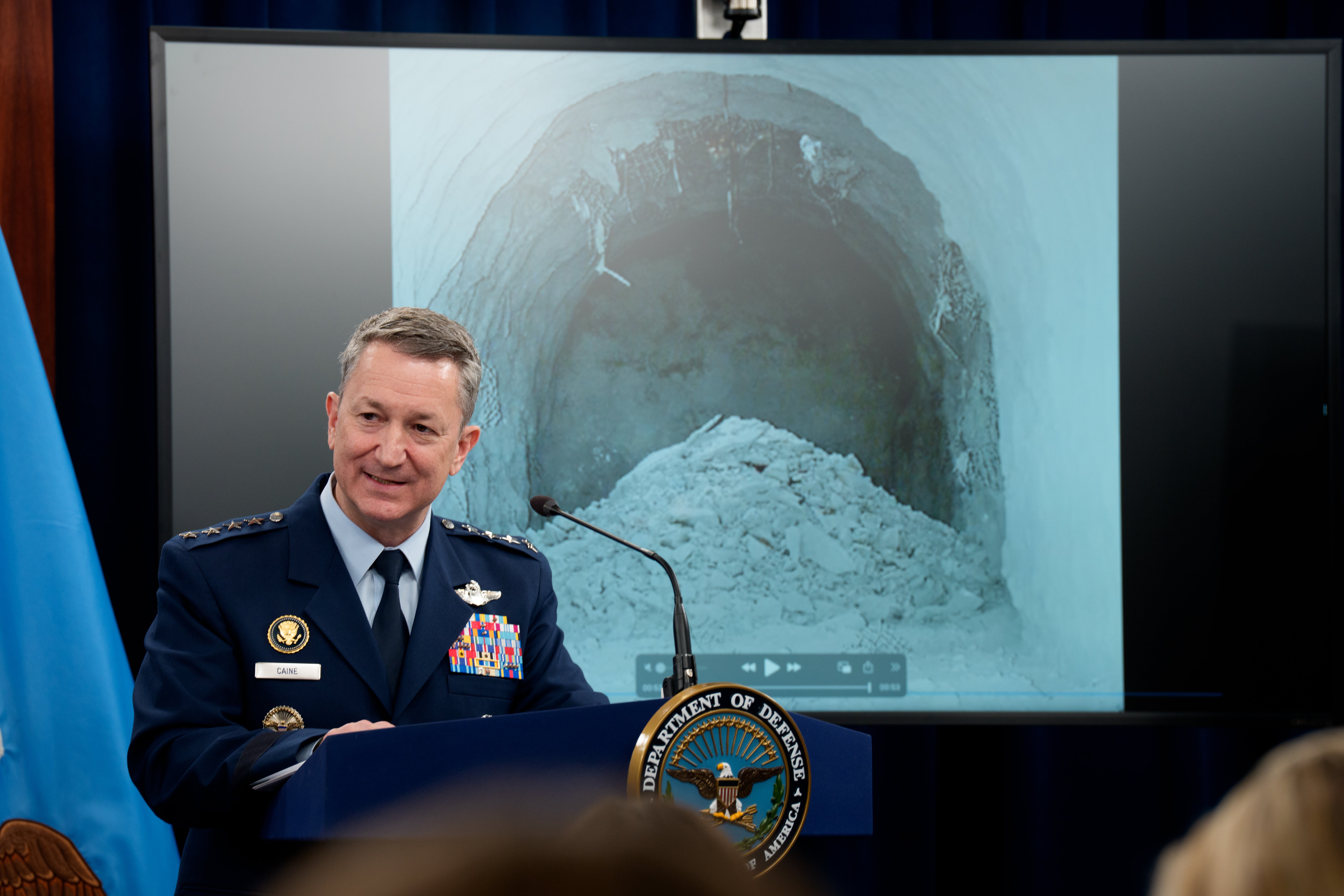
Hegseth noted that the leaked intelligence was merely preliminary, and that subsequent assessments had determined the mission was a resounding success. He cited John Radcliffe, the director of the CIA, and Tulsi Gabbard, Director of National Intelligence, who respectively described the nuclear program as “severely damaged” and “destroyed”.
“Time and time again — I can go down the list, those that understand, those that see, those that do proper assessments, recognize that what the United States military did was historic,” he continued.
Caine, for his part, gave an in-depth explanation about the capabilities of the 30,000 pound bombs that were dropped on the Fordow nuclear facility, which has become a focus of the questions.
He told the story of a Defense Threat Reduction Agency officer and a colleague who “lived and breathed this single target Fordow, a critical element of Iran's covert nuclear weapons program” for more than 15 years.
“He studied the geology. He watched the Iranians dig it out. He watched the construction, the weather, the discarded material, the geology, the construction materials, where the materials came from,” he explained. “He looked at the vent shaft, the exhaust shaft, the electrical systems, the environmental control systems, every nook, every crater, every piece of equipment going in and every piece of equipment going out. They literally dreamed about this target at night.”
If the press conference was designed to alleviate the anger of the president, it appeared to have worked.
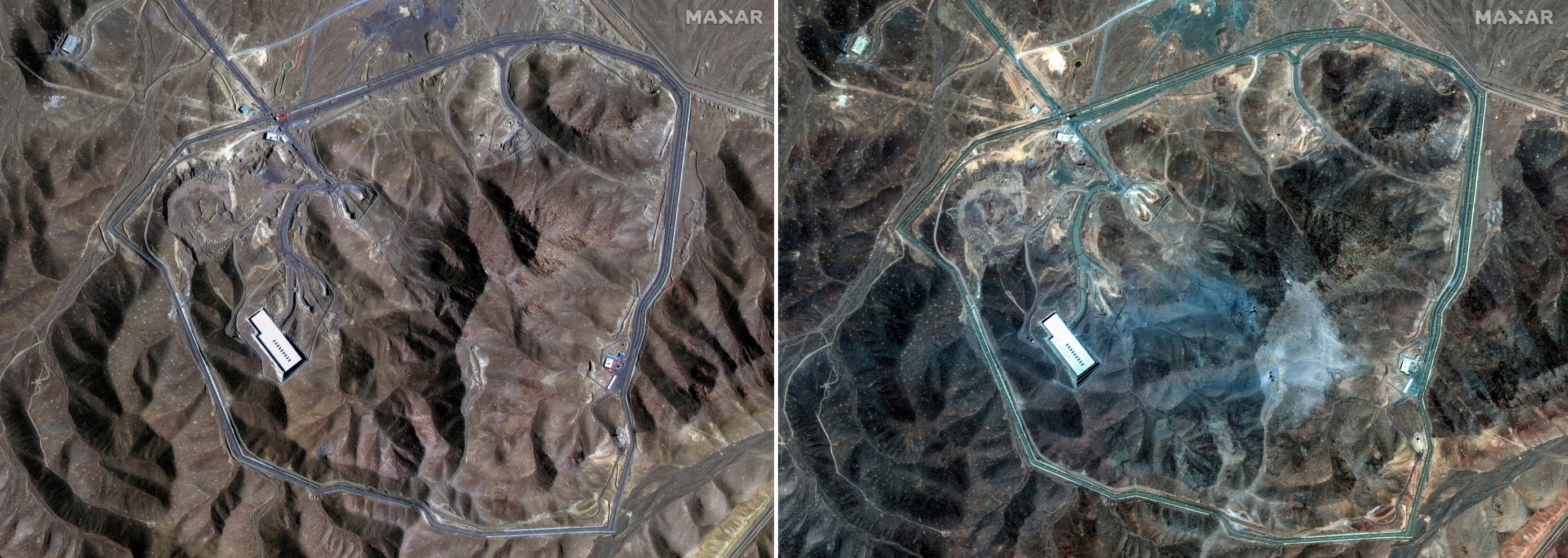
“One of the greatest, most professional, and most ‘confirming’ News Conferences I have ever seen! The Fake News should fire everyone involved in this Witch Hunt, and apologize to our great warriors, and everyone else!” Trump wrote on Truth Social after it had ended.
But although it may have satisfied Trump, it failed to answer key questions the public have about Iran’s nuclear program and its ability to build a bomb. In fact, those legitimate questions were batted away as an annoyance by Hegseth.
Fox News chief national security correspondent Jennifer Griffin tried to ask Hegseth — himself a former Fox News host — whether it was possible that Iran had preemptively moved its highly enriched uranium ahead of the airstrikes.
“Of course, we‘re watching every single aspect,” he responded. “But, Jennifer, you‘ve been about the worst. The one who misrepresents the most intentionally what the president says. I’m familiar.”
When another reporter followed up on the question, he said he was "not aware of any intelligence that I've reviewed that says things were not where they were supposed to be … moved or otherwise," suggesting it would have been destroyed in the strikes.
But that was not the assessment delivered by Vice President JD Vance in the days after the strike, when he acknowledged an estimated 400 kilograms of highly enriched uranium — which could eventually be enriched to weapons-grade levels — was still in Iran’s hands.

Nor is that the assessment of European intelligence agencies, who, according to a report in the Financial Times, have delivered preliminary reports to their governments that suggest Iran moved its stockpile away from its nuclear facilities before the strikes, leaving it largely intact.
Much like Wile E. Coyote, Trump appears to believe the bombs dropped on the Fordow facility were so large that they couldn’t possibly have failed. But a relentless focus on the Fordow nuclear site that was struck by bunker busters has blinded the administration to other lingering questions — other sites, other equipment that would aid Iran in building a bomb, that is potentially still out there. Furthermore, the strikes will only have increased the political will to build a weapon, if it wasn’t there before.
After watching the presser from California, Dr. Jeffrey Lewis, director of the East Asia Nonproliferation Program at the Middlebury Institute, became even more convinced that the mission was a failure.
“I think it's very telling that they don't have answers to what are very simple questions," he told The Independent.
"They can't tell you what happened to the highly enriched uranium, and they have tried a million excuses. They can't, or won't, engage with any of the questions about the facilities or what happened to the equipment,” he said.
Trump has now made it abundantly clear to his intelligence agencies and the U.S. military that he believes the strikes were a resounding success and that anyone who questions that narrative is insubordinate.
That may help Trump battle negative headlines in the short term, but it likely won’t help figure out just what capability Iran retained after the strikes.

 5 hours ago
3
5 hours ago
3

